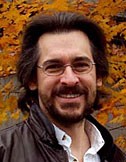Selected Publications
Whittle, C.-A., and M.O.Johnston. 2003. Male-biased transmission of deletvious mutations to the progeny in Arrabidopsis thaliana. Proc. Natl. Acad. Sci. USA 100: 4055-4059.
Whittle, C.-A., and M.O.Johnston. 2003. Broad-scale analysis contradicts the theory that generation time affects molecular evolutionary rates in plants. J. Mol. Evol. 56: 223-233.
Whittle, C.-A., and M.O. Johnston. 2002. Male-driven evolution of mitochondrial and chloroplastidial DNA sequences in plants. Molecular Biology and Evolution. 19: 938-949.
Whittle, C.-A., T. Beardmore and M.O. Johnston. 2001. Is G1 arrest in plant seed induced by a p53-related pathway? Trends in Plant Science (6: 248 - 251).
Simons, A.M., and M.O. Johnston. 2000. Plasticity and the genetics of reproductive behaviour in the monocarpic perennial, Lobelia inflata (Indian tobacco). Heredity 85:356-365.
Simons, A.M., and M.O. Johnston 1999. The cost of compensation. American Naturalist 153: 683-687.
Li, P., and M.O. Johnston 1999. Evolution of meiosis timing during floral development. Proceedings of the Royal Society B: Biological Sciences 266: 185-190 (and cover photo).
Johnston, M.O. 1998. Evolution of intermediate selfing rates in plants: Pollination ecology versus deleterious mutations. Genetica 102/103: 267-278 (special issue, Mutation and Evolution. Published in book form as well by Kluwer Press).
O'Connell, L.M., and M. O. Johnston 1998. Male and female pollination success in a deceptive orchid, a selection study. Ecology 79: 1246-1260.
Johnston, M.O., B. Das, and W.R. Hoeh 1998. Negative correlation between male allocation and self-fertilization in a hermaphroditic animal. Proceedings of the National Academy of Sciences USA 95: 617-620.
Simons, A.M., and M.O. Johnston 1997. Developmental instability as a bet-hedging strategy. Oikos 80: 401-406.
Johnston, M.O., and D.J. Schoen. 1996. Correlated evolution of self-fertilization and inbreeding depression: An experimental study of nine populations of Amsinckia (Boraginaceae). Evolution 50: 1478-1491.
Johnston, M.O., and D.J. Schoen. 1995. Mutation rates and dominance levels of genes affecting total fitness in two angiosperm species. Science 267: 226-229 (and cover photo).
Links
|

